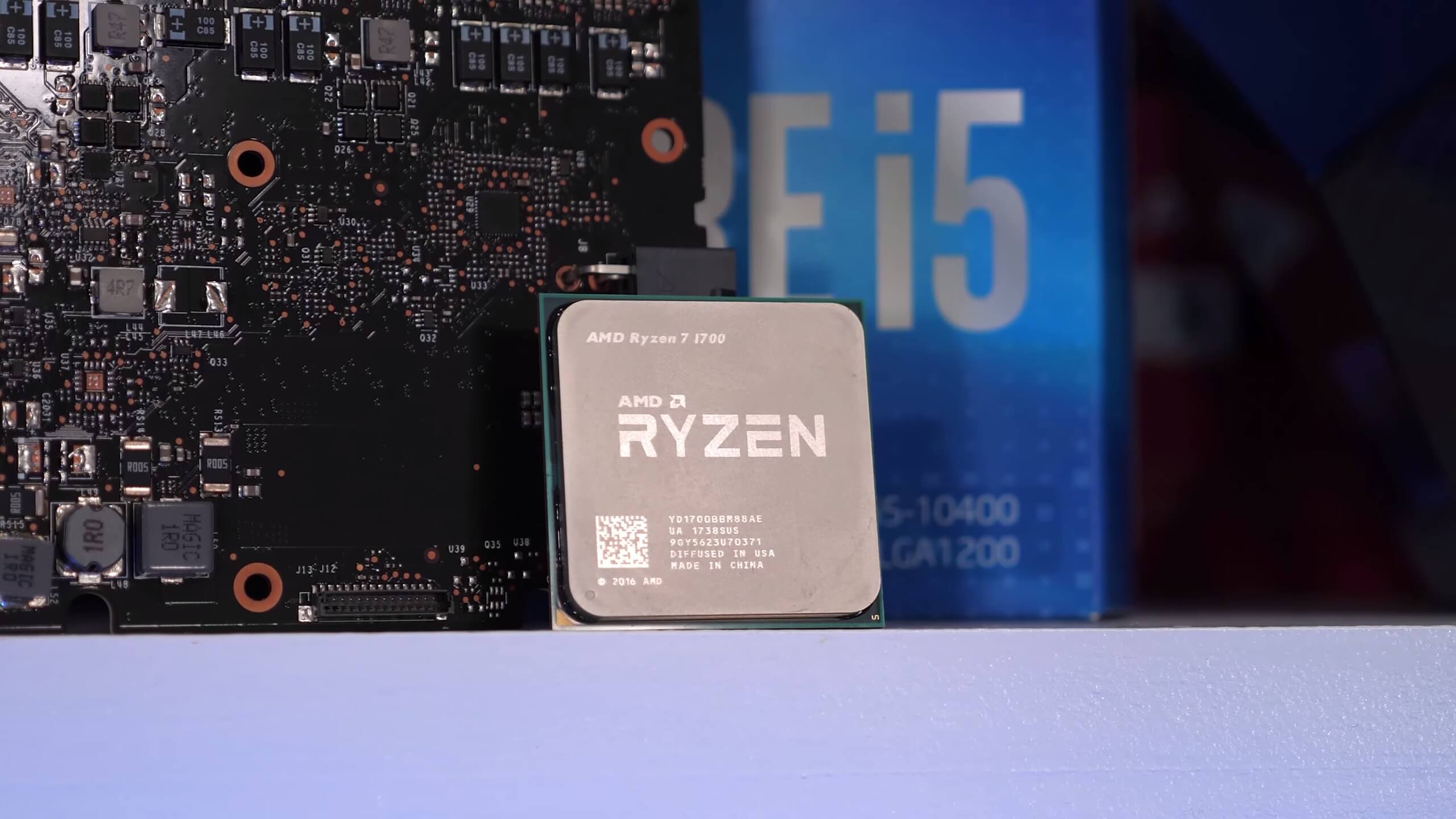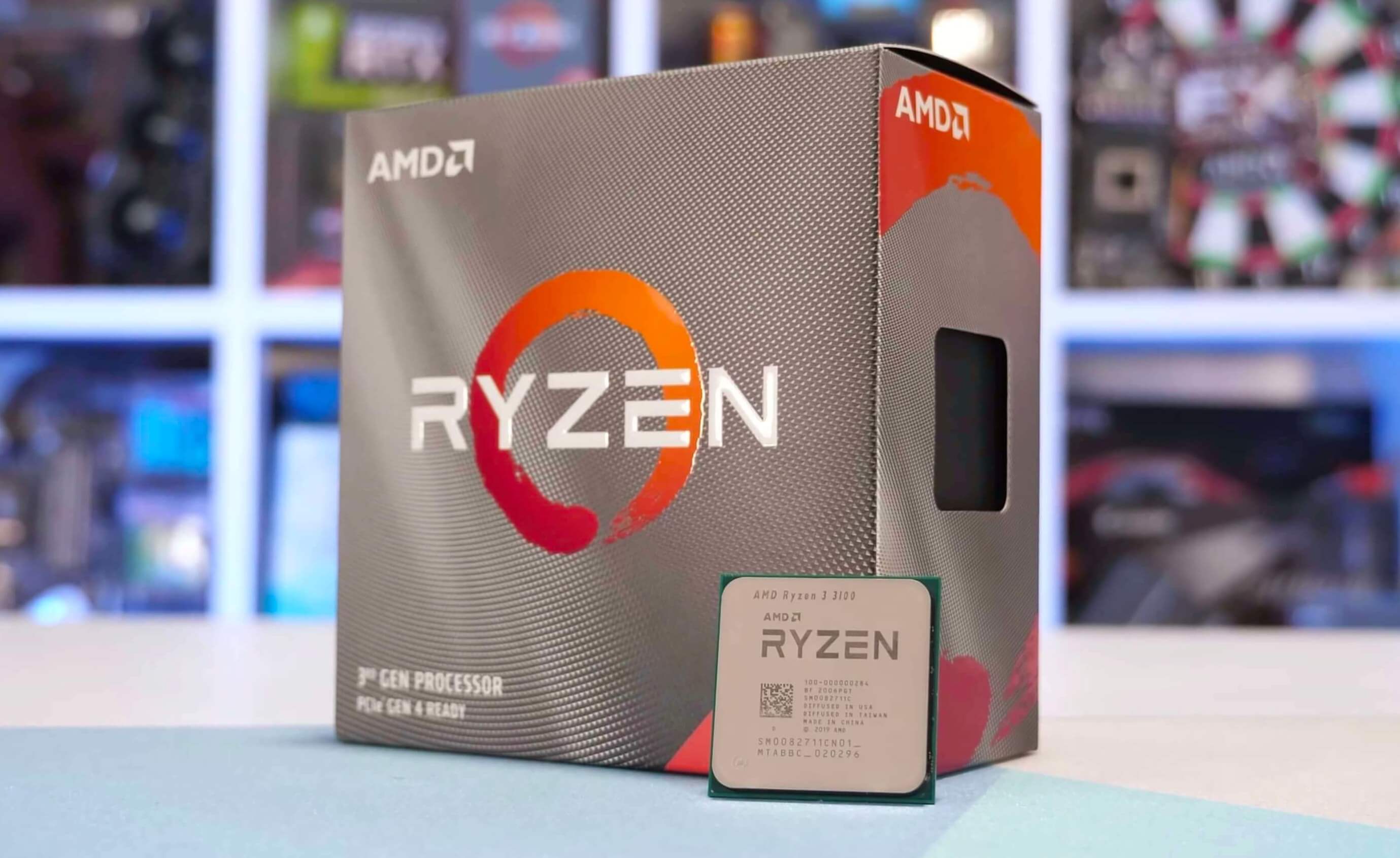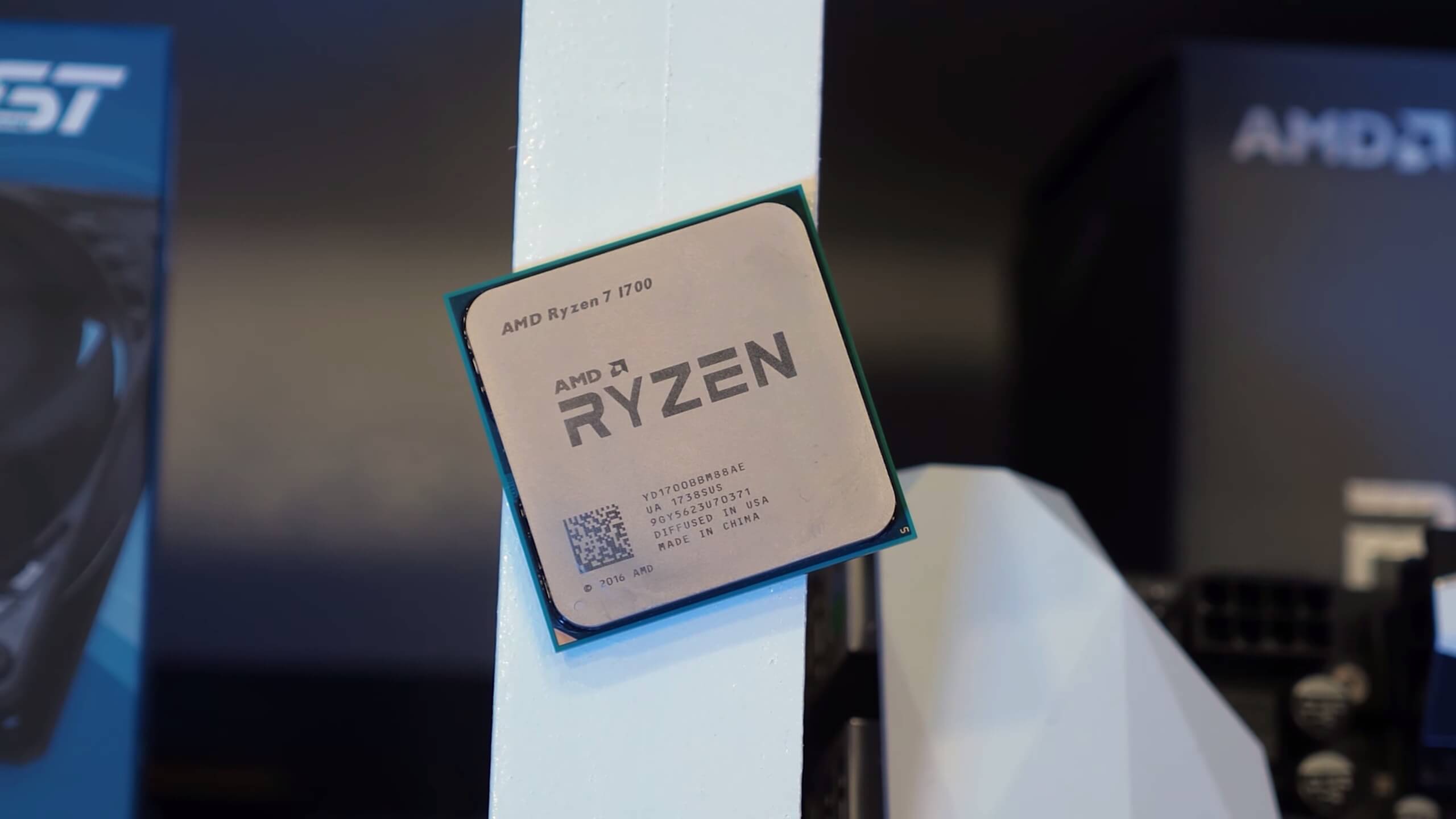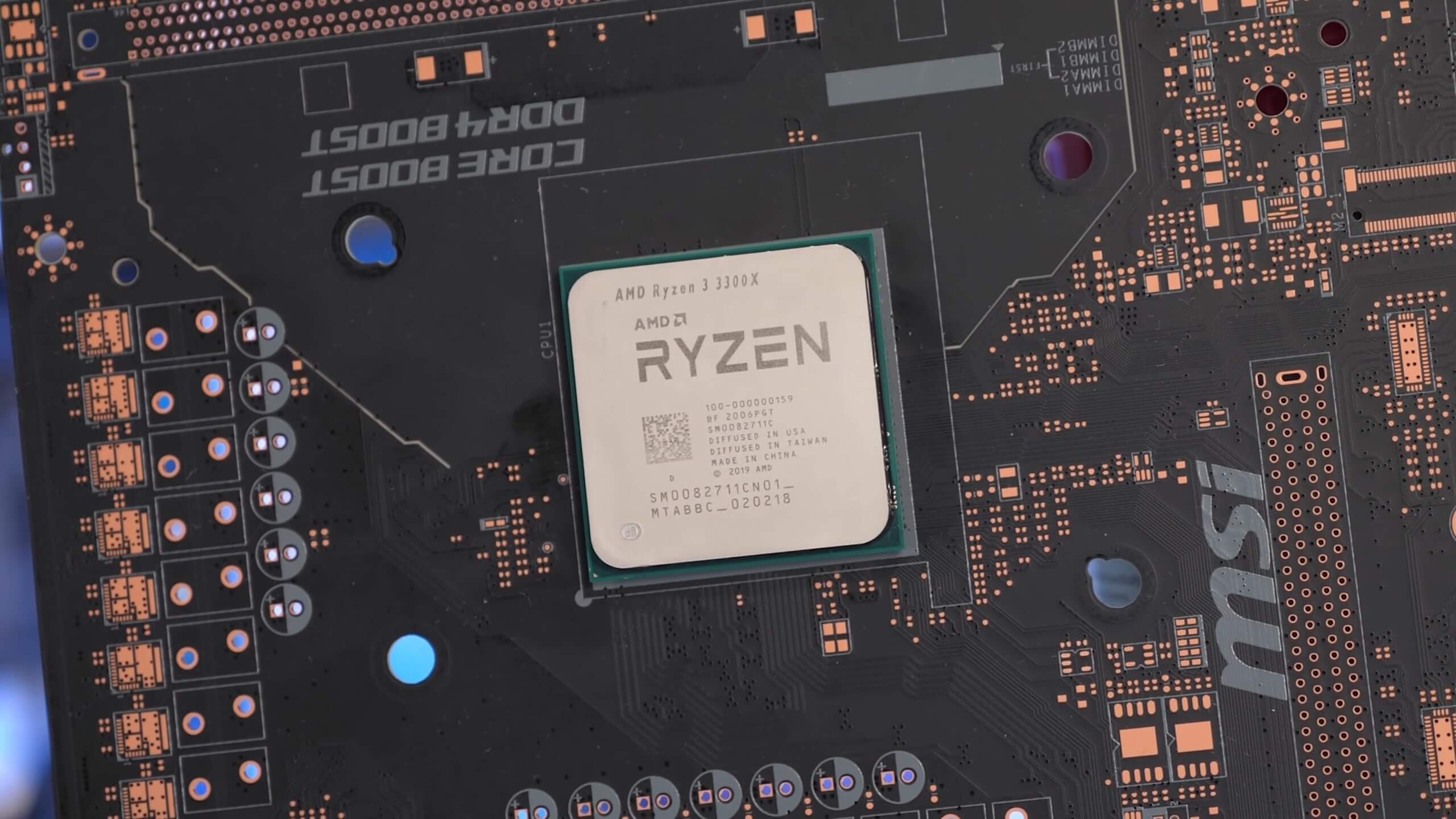AMD's first generation old-time favorite, the Ryzen 7 1700 seems to have aged rather well. In a recent test we compared it against its direct competition at the time, the Core i7-7700K. The 8-core, 16-thread Ryzen processor enjoys strong performance gains in almost all the applications tested, often beating the Intel processor by almost 40%, while Intel did lead in a few areas, the margin in those was closer to 10%.
On the gaming front, the situation has improved but for the most part the Ryzen processor trails Intel old quad-core. On the upside, three years ago the 7700K was ~20% faster than the R7 1700 for playing games, while today that margin has shrunk considerably to ~5%. Clearly as games have become more demanding, having more cores has played to AMD's advantage.
Either way, while interesting to watch, that comparison may be somewhat irrelevant today. Budget PC builders right now can choose from a new set of processors. For roughly $130, you get the option to buy a new Ryzen 3 3300X. But wait, for that kind of money you can also get a second hand Ryzen 7 1700. This question had us pausing to think about the options. The 3300X is a 4-core/8-thread processor that enjoys the numerous performance and efficiency advantages of the Zen 2 architecture, while the R7 1700 is an 8-core/16-thread processor based on the original and slower Zen.
Side note: we're working on a new test where we compare Ryzen 3, 5, 7 and 9 CPUs to see how performance scales as price increases – coming up soon.
The R7 1700 might have twice as many cores and therefore at the same price appear to be the more obvious choice, but the cores are quite a bit slower.
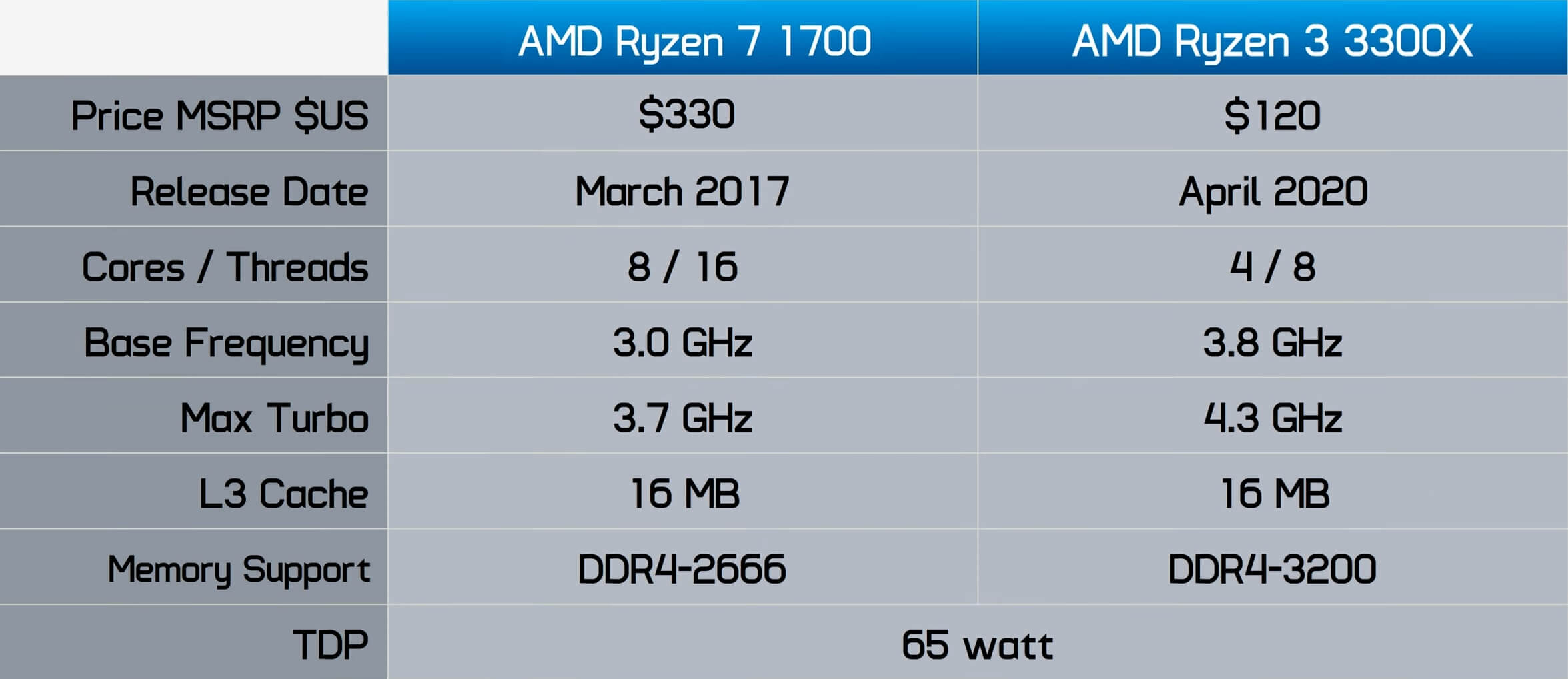
Looking at some productivity data, the R7 1700 is at best on par with the 6-core/12-thread Ryzen 5 3600 and in some instances was slower, and not even overclocking can completely close the gap. But the 3300X, is not as fast as the R5 3600, and gaming performance is harder to predict depending on the GPU you plan to using.
Today's GPU scaling performance test will pit these two processors against each other, 8 old cores vs. 4 new cores, gaming with a GeForce GTX 1650 Super, RTX 2060, RTX 2070 Super and RTX 2080 Ti using a range of visual quality presets. The test system is completed by the Gigabyte X570 Aorus Master motherboard, 32GB of G.Skill FlareX DDR4-3200 CL14 memory and the Corsair H115i Pro AIO cooler.
Benchmarks
Starting with one of the worst titles for Ryzen processors, particularly first-gen Ryzen, we have Far Cry New Dawn. Using the medium quality preset, which is labeled 'normal' we're heavily CPU bound when using not just the GeForce RTX 2080 Ti, but also the RTX 2070 Super and even the RTX 2060.
The Ryzen 3 3300X is up to 26% faster here in average frame rates and 17% for the 1% lows. That's a substantial margin and it means the Ryzen 7 1700 is heavily limiting gaming performance with anything faster than an entry-level GPU like the GTX 1650 Super.
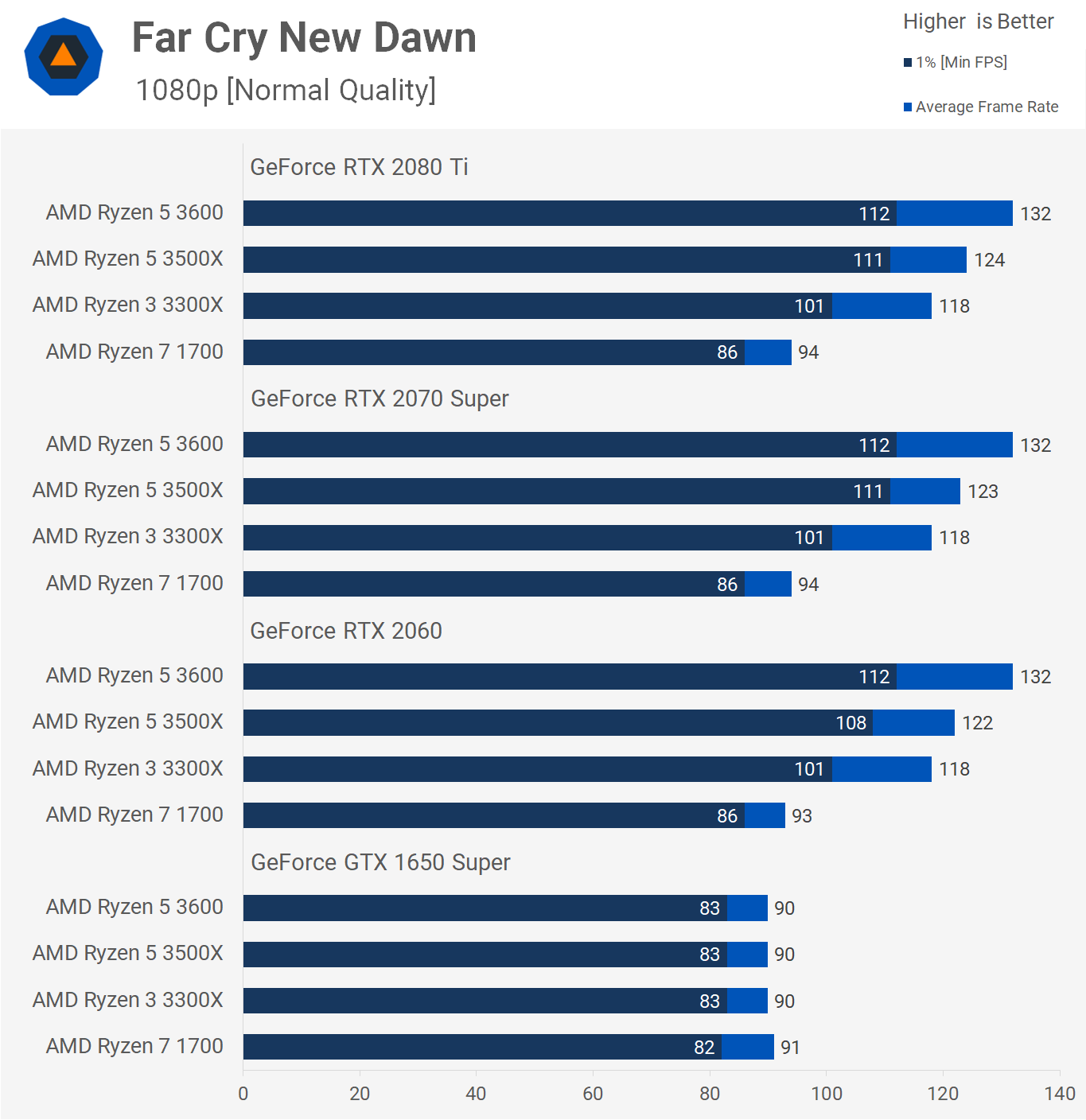
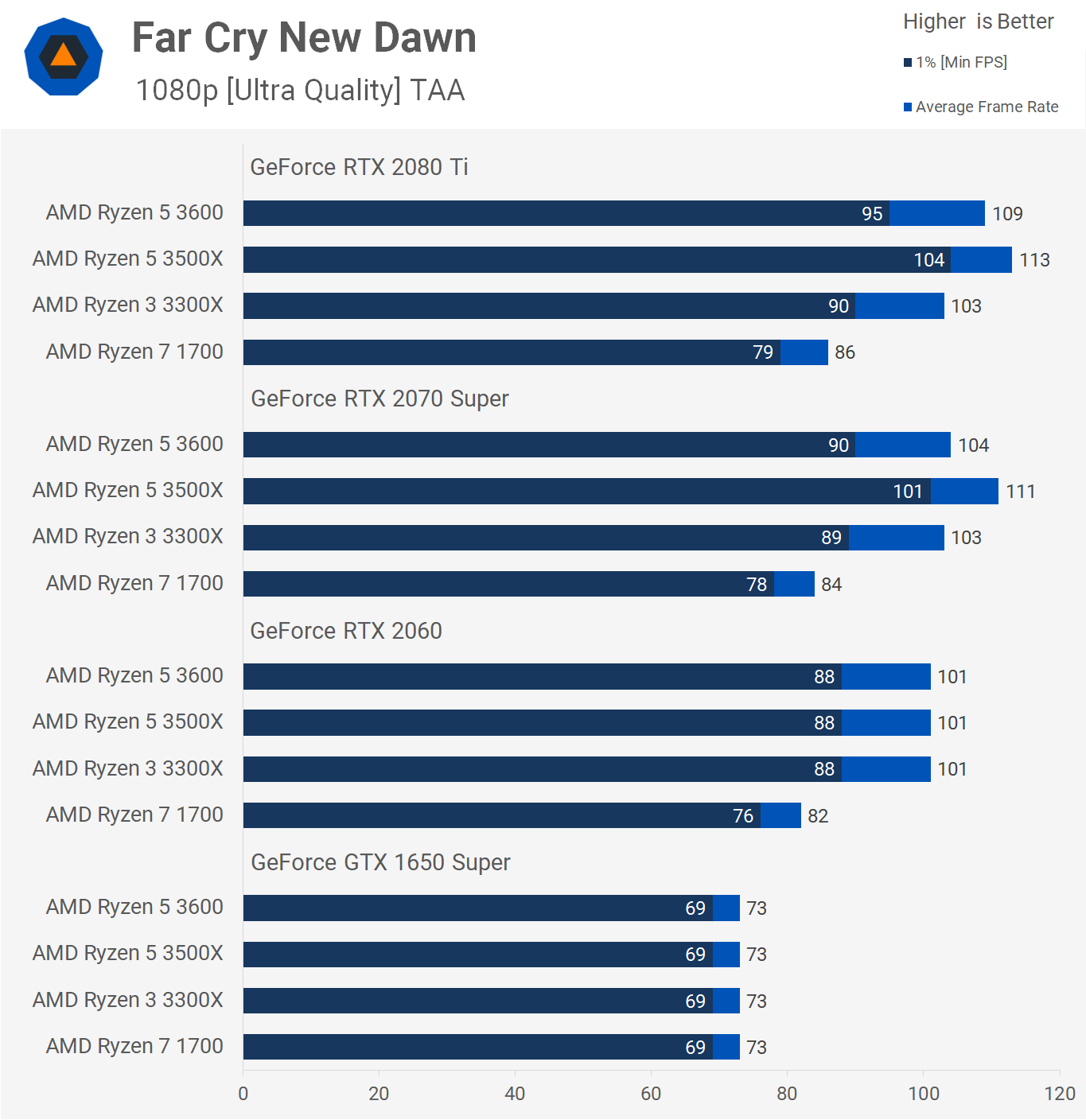
Far Cry New Dawn is admittedly a worst case scenario for first-gen Ryzen and certainly doesn't call for more than a quad-core SMT enabled processor. In fact, the 3300X only saw peak utilization hit 65% with 55% being the average and that meant the R7 1700 peaked at just 40%, but typically hovered around 30%. Even with the ultra quality settings enabled, the GTX 1650 Super is about as fast as you can go with the 1700 before it becomes the primary performance limiting component.

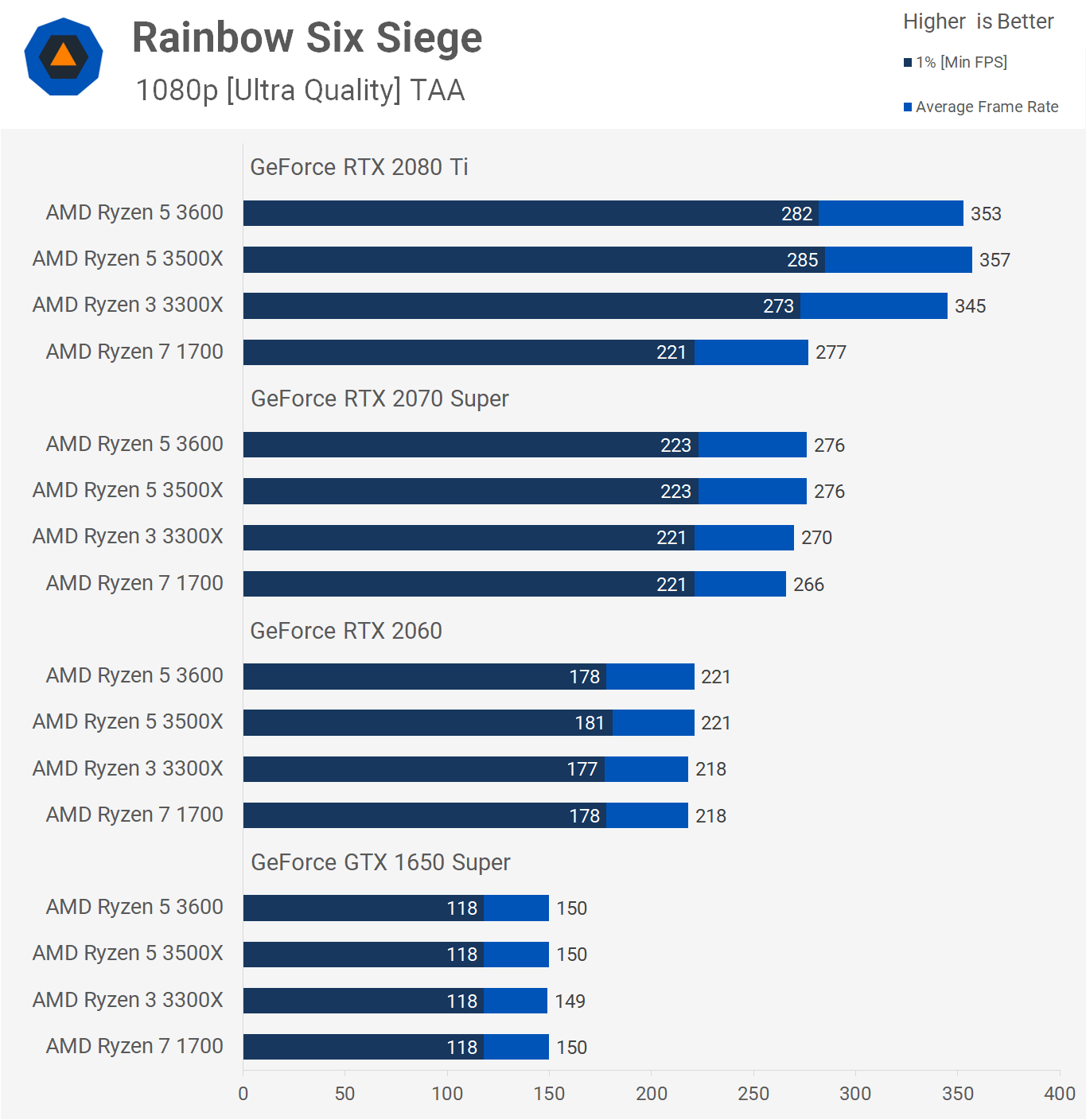
Rainbow Six Siege is a much more forgiving title for the first-gen Ryzen and here we see the 1700 stick with the 3300X using the GTX 1650 Super, but also the RTX 2060 and even the RTX 2070 Super for the most part, when using medium quality settings at 1080p. The R7 1700 creates a serious CPU bottleneck with the RTX 2080 Ti and here the 3300X was up to 34% faster.
That's another big margin, though we must wonder how relevant it is given the old Ryzen CPU ensured a minimum of 240 fps was rendered during our test.
Maxing out the quality preset doesn't change things much, as we see little to no difference between the 1700 and 3300X using the GeForce RTX 2070 Super. This is a good result overall and Rainbow Six Siege does a fairly good job of utilizing the 8-core processor with CPU usage hovering around 60% with peaks as high as 80%, when using the RTX 2080 Ti. That's compared to a peak of 90% with the 3300X and an average utilization of 75%.
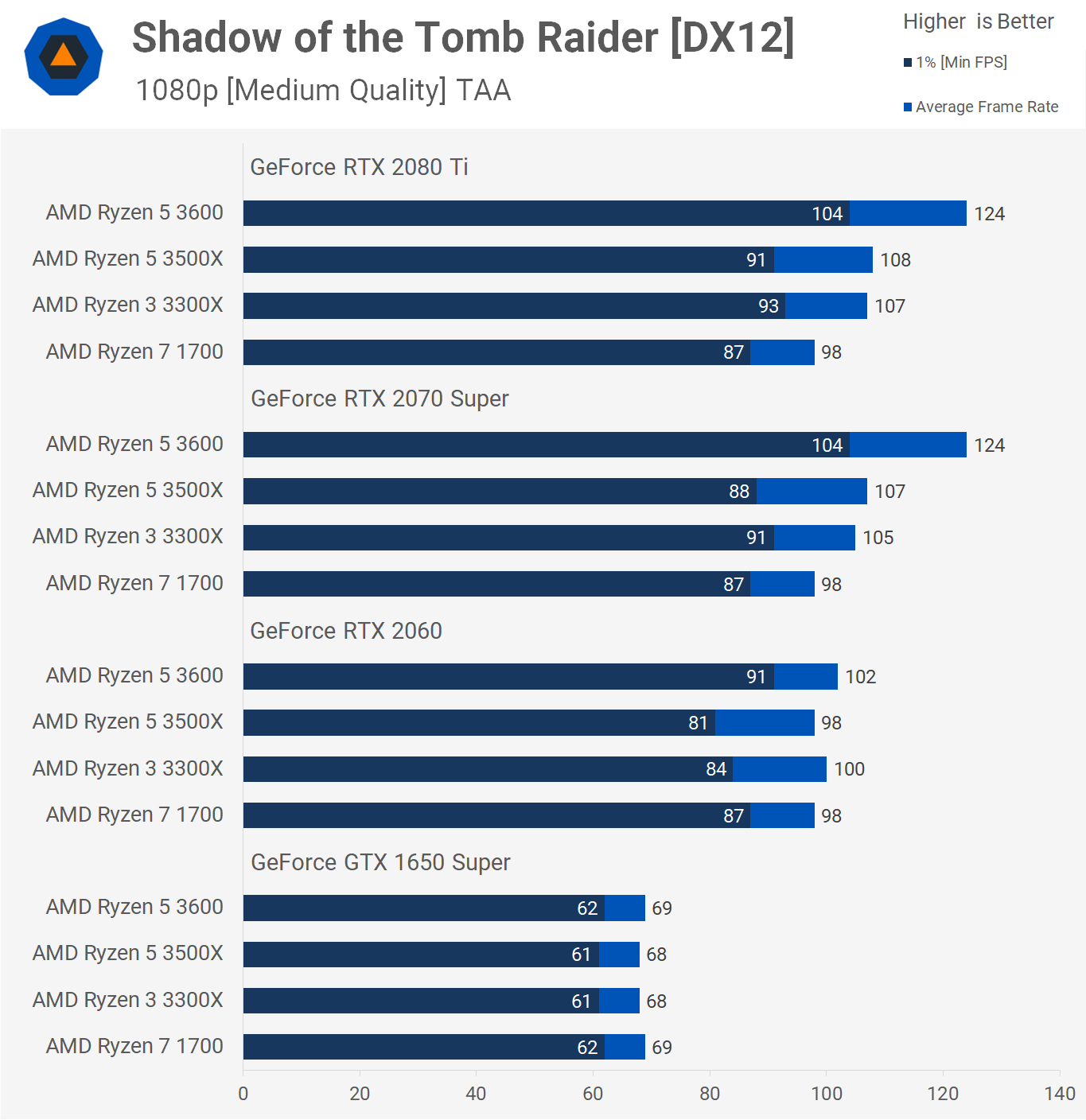
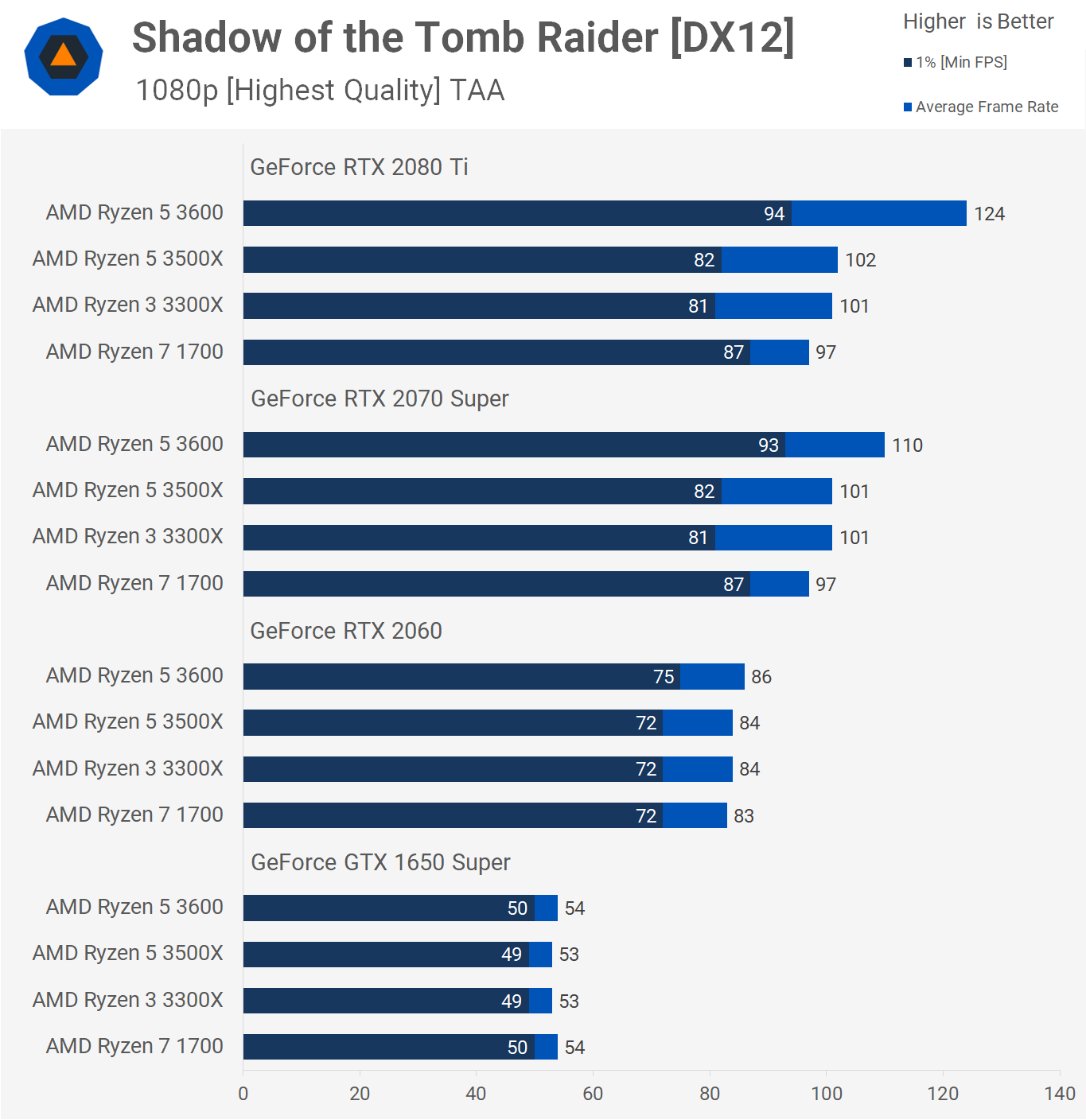
Shadow of the Tomb Raider is another title that heavily utilizes 6 and 8 core processors, so it was no surprise to see the 3300X peak at 97% with an average of 90% utilization during our testing with the highest quality settings. The Ryzen 7 1700 has a little more headroom, but even so it still peaked at 80% and averaged 70% which makes sense given it typically sits somewhere between the 3300X and 3600 for productivity performance.
The main takeaway is that we see close performance between the 3300X and 1700 in another CPU-demanding game. Using dialed down quality settings the 3300X was up to 9% faster when using the RTX 2080 Ti, 7% faster with the RTX 2070 Super, and comparable performance with the RTX 2060 and GTX 1650 Super.
Increasing the quality preset does increase the CPU load and now the older 8-core Ryzen processor is starting to edge ahead when looking at the all-important 1% low performance. Here the 1700 is up to 7% faster and it maintains that lead even with the RTX 2070 Super.

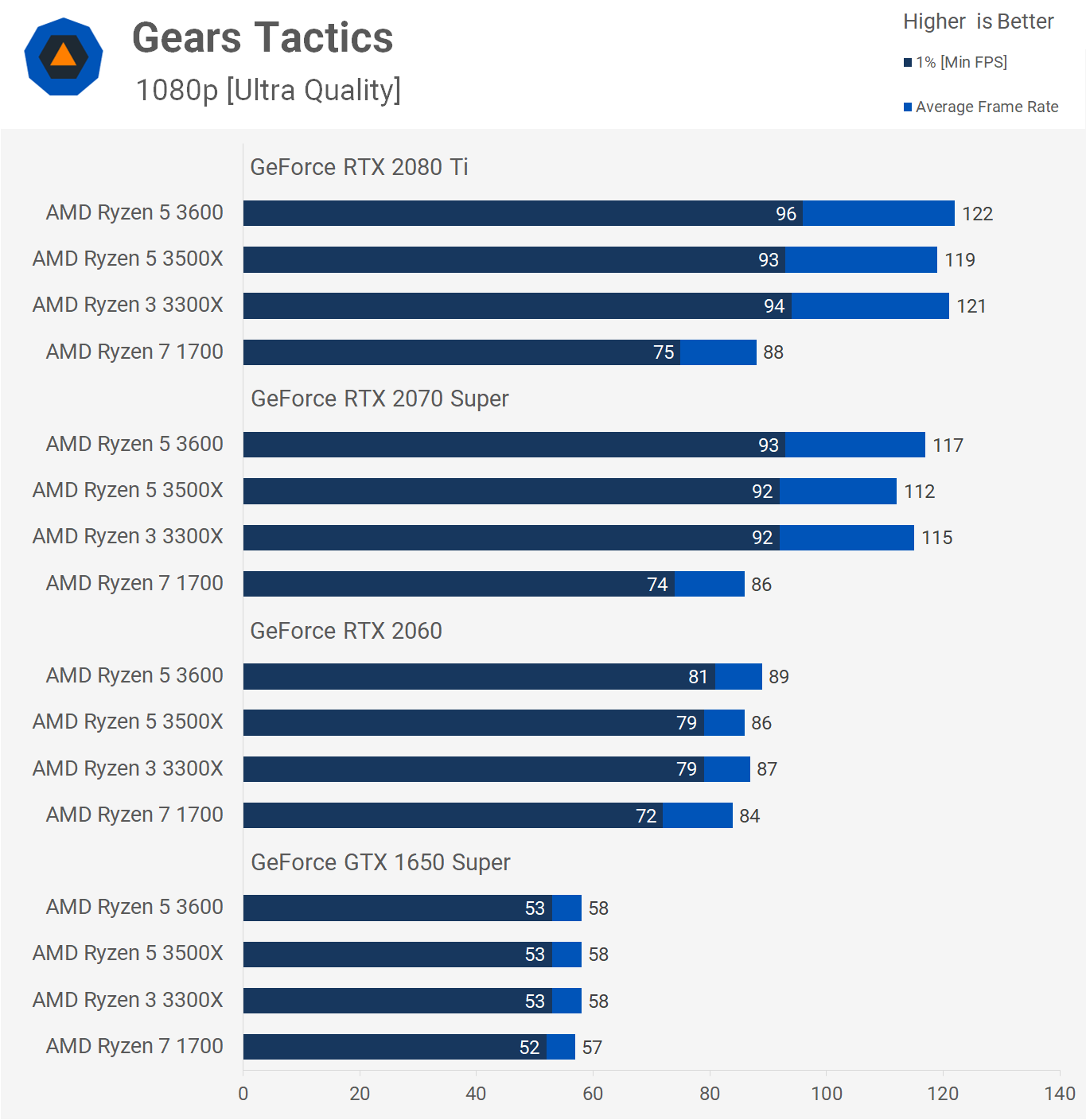
Gears Tactics is another game where first-gen Ryzen performs poorly, at least relative to Intel's Core series and AMD's own 3rd generation Ryzen processors. We're seeing over 90 fps at all times with averages well above 100 fps, so for this kind of game that's more than enough, but it's crazy to see the 3300X up to 43% faster with the RTX 2080 Ti and even up to 37% faster with the RTX 2060.
This game simply isn't well suited for the original Zen architecture. We saw an average CPU utilization of 25% when using the ultra quality preset with a peak of 50%. The 3300% on the other hand averaged 45% with a peak utilization of 80%, so this higher clocked modern quad-core is the better chip here.
When we increase the graphics quality preset to Ultra, the 1700 is able to match the 3300X with the GTX 1650 Super as the game becomes GPU bound. That wasn't the case with the RTX 2060, though we're pretty close here.
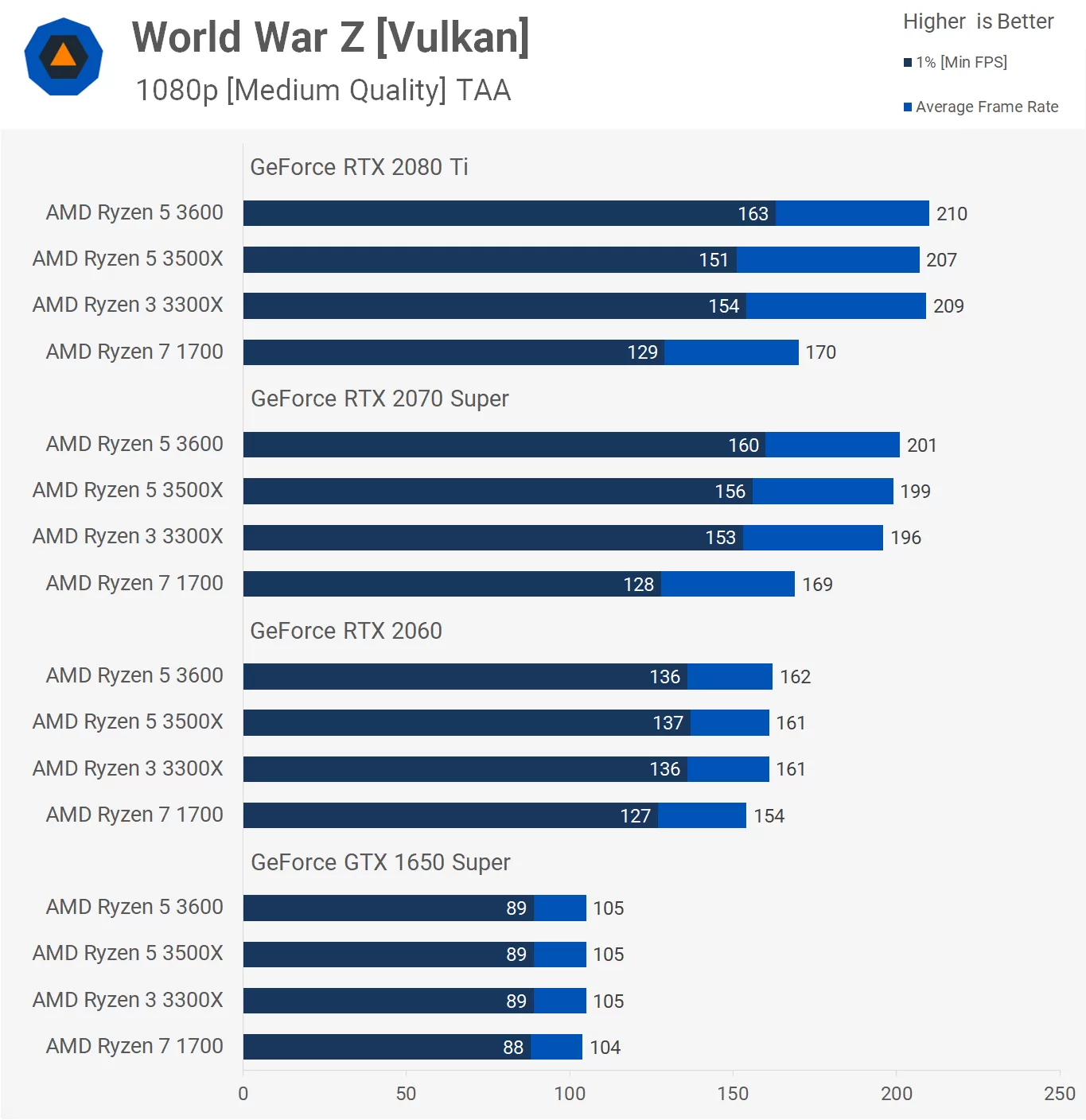

Next up we have World War Z and starting with the 1080p medium data we see that the Ryzen 7 1700 struggles again with the faster RTX 2080 Ti and RTX 2070 Super GPUs, trailing the 3300X by up to a 23% margin. This is another title that doesn't see the R7 1700 match the 3300X until we heavily limit frame rate performance with the GTX 1650 Super.
This is explained by the fact that World War Z is unable to take advantage of the 8-core processor as we saw an average CPU utilization of just 30% with peaks hitting 45%. The 3300X on the other hand averaged 60% usage with peaks as high as 80%.
Increasing the visual quality created enough of a GPU bottleneck when using the RTX 2060 that it allowed the 1700 to deliver the same level of performance. Not so with faster GPUs.

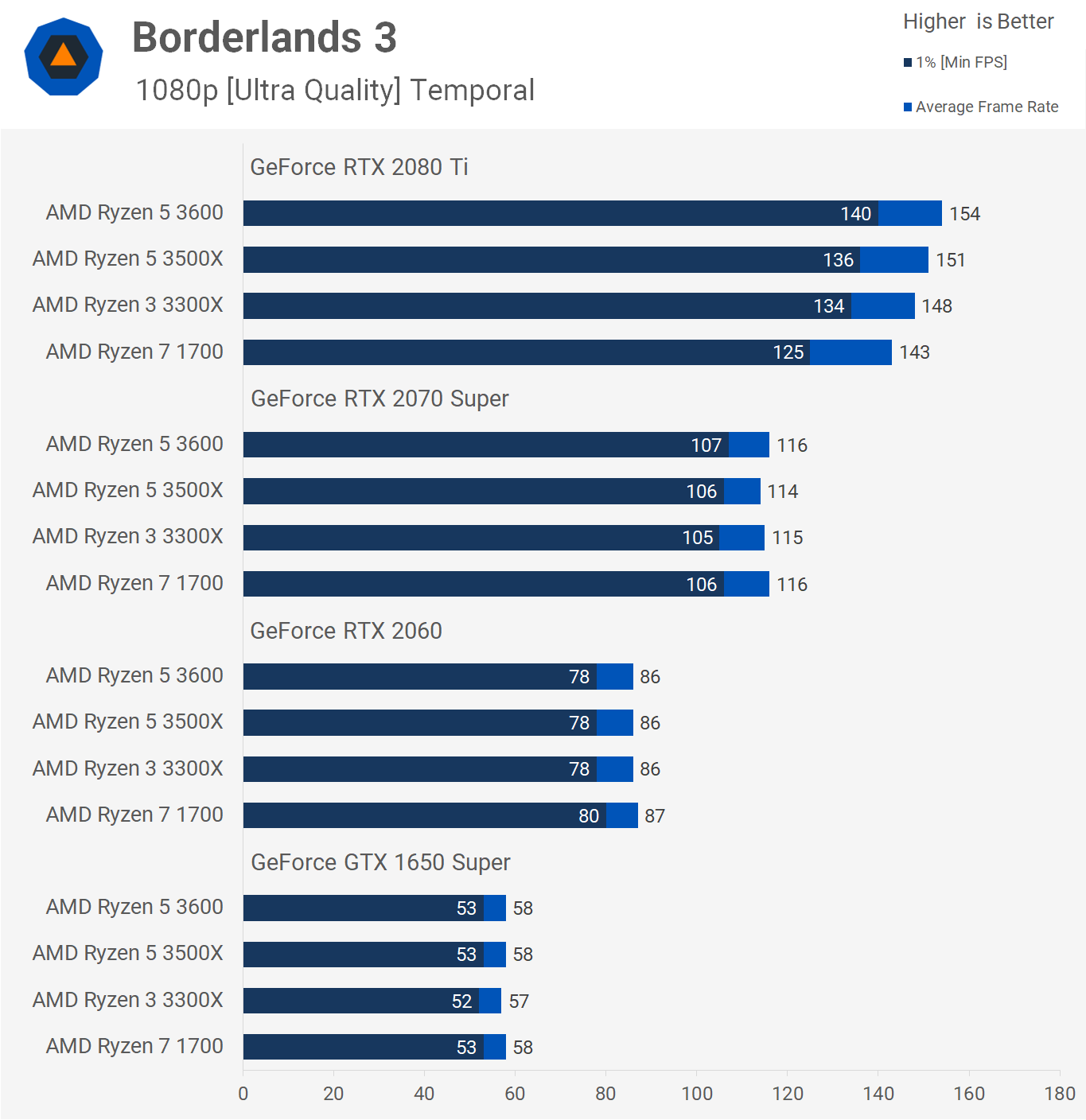
The last game in our test suite today, Borderlands 3 is yet another title that doesn't fully utilize the Ryzen 7 1700 – not even close. In our test pass we saw an average utilization of 30% with a peak of just 35%. Granted this isn't a CPU demanding title, but we did see much higher utilization with the 3300X, peaking at 55% with an average of 45%.
The R7 1700 slips behind with the RTX 2070 Super and 2080 Ti, but this time it is able to max out the RTX 2060 and therefore the GTX 1650 Super. It's also worth noting that with the higher end GPUs, we were seeing well over 130 fps at all times. Increasing the graphics quality to Ultra allowed the 1700 to match the 3300X right up to the 2070 Super, while it was just 7% slower with the 2080 Ti.
Performance Summary
Here's a look at the average performance across the games tested. We have to say this paints a weak picture for the Ryzen 7 1700 as it was up to 9% slower than the 3300X, even with the RTX 2060 and that margin balloons out to 22% with the RTX 2080 Ti.
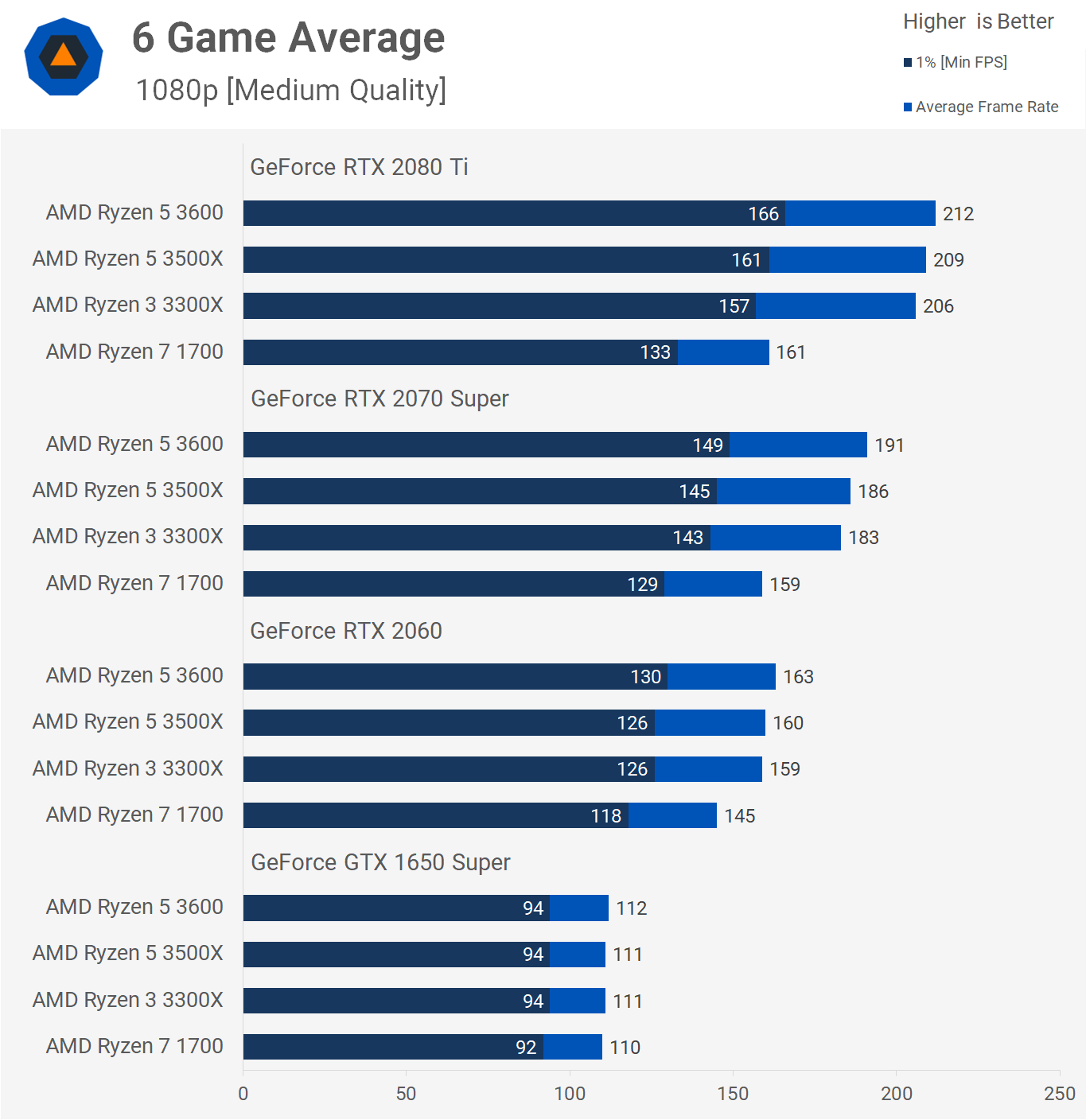

The ultra quality results look considerably better and it's only the 2080 Ti configuration where the 1700 trails by a sizable margin. It's quite clear that the 3300X is the superior gamer, at least for now.
What We Learned
Time to draw a few conclusions, starting with the key question that brought this comparison together: if you've got about $120 to spend on a CPU, should you buy a new Ryzen 3 3300X (assuming you can find one) or instead snap up a second hand Ryzen 7 1700 with more cores?
Based on the data, we have to recommend the Ryzen 3 3300X for gamers, and to be more specific, gamers who plan on doing nothing but gaming. It's hard to pick the R7 1700 over the 3300X for gaming exclusively when there were multiple CPU-limited scenarios where the Ryzen 3 processor was 20, 30 and even up to 40% faster.
In the case of a more demanding title such as Shadow of the Tomb Raider that can take advantage of multiple cores better, we saw very high utilization with the 3300X, and at times allowed the 1700 to deliver better 1% low performance. So if we get a game that pushes utilization say ~20% higher, while also spreading the load across all cores, that could push performance strongly in the older 8-core processors favor.
It's also worth noting that if you happen to be using a graphics card such as the GeForce RTX 2060, Radeon RX 5700, or a slower GPU than that, then you won't actually notice the difference between these two CPUs for the most part, particularly if you like to crank up the visual quality settings.
For PC builders and prospective Ryzen buyers, stay tuned later this week for a new comparison of Ryzen 3 vs. Ryzen 5, 7 and 9 CPUs to see how performance scales and what's the best processor for your needs.
